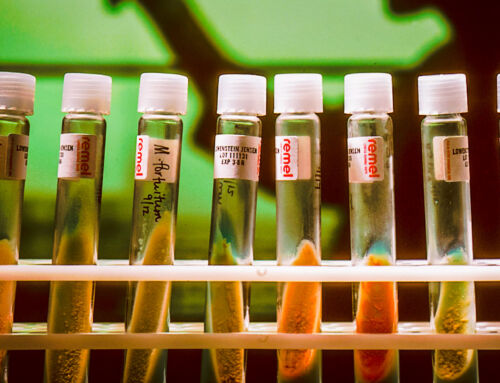View by Topic
Recent Articles
-
Congress Blocks California’s Gasoline Car BanSaturday, May 31st, 2025
-
EPA Will Keep Current Limits for “Forever Chemicals” in Drinking WaterSaturday, May 24th, 2025
-
Court Indefinitely Pauses SEC Climate Rule LitigationSaturday, May 17th, 2025
-
Maryland is About to Regulate Mold But is the Cart Before the HorseSaturday, May 10th, 2025
View by Month/Year
“Green Building Law Update” Headlines
Recent Articles & News from
Stuart Kaplow’s blog
at GreenBuildingLawUpdate.com
- Congress Blocks California’s Gasoline Car Ban: A Legal and Policy Analysis June 1, 2025
- EPA Will Keep Current Limits for “Forever Chemicals” in Drinking Water May 25, 2025
- Court Indefinitely Pauses SEC Climate Rule Litigation May 18, 2025
- Maryland is About to Regulate Mold: But is the Cart Before the Horse? May 11, 2025
Subscribe to the Green Building Law Update!
Stuart Kaplow brings his expertise and extensive experience to the table with his unique digital publication, "Green Building Law Update". Subscribers receive regular updates to keep them informed about important issues surrounding Environmental Law, Green Building & Real Estate Law, as well as the emerging demand for Environmental Social Governance (ESG).
Get fresh content through the lense of Stuart Kaplow's cutting-edge expertise, innovative commentary and insider perspective. Don't miss another issue! Subscribe below.

Offsets and RECs: A Powerful Duo for Reducing Greenhouse Gas Emissions and Repairing the Planet
As concerns about climate change intensify, businesses and individuals alike are seeking effective ways to set and meet the goals of net zero energy and greenhouse gas emissions to contribute to a sustainable planet. Two essential but fundamentally different tools that have gained prominence in recent years are Offsets and Renewable Energy Certificates (RECs). These mechanisms will play a crucial role in combating GHG emissions and fostering global environmental sustainability. In this blog post, we will explore the differences between Offsets and RECs including modestly attempting to harmonize definitions of these key concepts and explain why both are essential and efficacious in the fight against climate change.
Understanding Offsets: Offsets refer to the reduction of GHG emissions in one sector to compensate for emissions produced elsewhere. This is often achieved by an organization that reduces its GHG emission footprint by purchasing and retiring emissions through projects that actively sequester GHG or prevent emissions from being released. Although there is no universally accepted definition among governments and standard setting organizations of what an Offset is, these projects can involve renewable energy installations, methane capture from landfills, energy efficiency initiatives, reforestation efforts, or food waste composting and it is widely agreed that they each use as the unit of measure metric tons of CO2 or CO2 equivalent. They reduce or “offset” an organization’s scope 1, 2, or 3 emissions, as a net adjustment valued by the marketplace.
The advantage of offsets is simple: if an individual or organization cannot eliminate all its emissions directly (e.g., a tenant in an existing 80 story office building in an urban setting can only do so much on site), it can support emission reduction projects elsewhere to achieve a goal of net zero. Offsets offer flexibility and scalability, allowing businesses and individuals to contribute to sustainability efforts beyond the four walls and roof of their own operation and such makes sense if climate change is a global problem. We blogged some weeks ago about The Evolution of Environmental Offsets: From Indulgences to Greenhouse Gas Emission Reductions.
Unraveling RECs: Renewable Energy Certificates, commonly known by the acronym RECs, focus on promoting renewable energy generation. RECs are tradable instruments, with the terms set by state and local government regulators and electricity transmission authorities, making some RECs more valuable than others (e.g., U.S. solar REC prices today range from under $5 to more than $500). RECs use as the unit of measure the property rights to the “renewableness” (i.e., all non power attributes) of one megawatt-hour (MWh) of renewable energy generated. When a renewable energy project produces electricity, it generates RECs proportional to the amount of clean energy it feeds into the grid. RECs can lower an organization’s gross market based scope 2 emissions from utility provided electricity which has a huge upside for the planet.
Purchasing RECs enables businesses and individuals to financially support renewable energy projects, which helps increase the share of clean energy in the overall energy mix. This, in turn, displaces fossil fuel energy, reducing GHG emissions associated with power generation.
The Difference Between Offsets and RECs: The primary difference between Offsets and RECs lies in the nature of the GHG emissions reduction they facilitate. Offsets focus on compensating for emissions across various business sectors, including transportation, agriculture, and industrial processes. On the other hand, RECs concentrate on increasing clean energy production from renewable sources such as wind, solar, hydro, and geothermal.
While both Offsets and RECs contribute to reducing GHG emissions, they operate in different domains, giving individuals and companies diverse options to take action against climate change.
The Synergy Between Offsets and RECs: Offsets and RECs work synergistically to combat climate change and repair the planet. By utilizing both mechanisms, businesses and individuals can address a broader range of emissions sources and promote the transition to a decarbonized economy.
Imagine a company that has already implemented energy efficiency measures to minimize its direct emissions. To achieve further emission reductions and become net zero energy and GHG emissions, the company can invest in high quality Offsets from verified projects that tackle emissions in other locations. Simultaneously, the company can purchase RECs to support clean energy generation, indirectly reducing emissions associated with electricity consumption.
The Efficacy of Offsets and RECs: The efficacy of Offsets and RECs lies in their ability to drive real and measurable GHG emission reductions. Offsets’ success depends on the quality of the projects they support and the extent to which they genuinely lead to emissions reductions beyond what would have occurred naturally or through regulations.
Similarly, the success of RECs hinges on the investment they attract into renewable energy projects. Increased demand for RECs incentivizes the development of more renewable energy infrastructure, accelerating the transition away from fossil fuels and decreasing GHG emissions from power generation.
Conclusion: Offsets and RECs are valuable tools for organizations that cannot reasonably generate enough onsite renewable energy to be fully effective in achieving net zero energy and GHG emissions. Critics who demand net zero be achieved by each organization on site are wrong and are at best pie in the sky thinkers or at worst simply unknowledgeable when for example more than 90% of U.S. businesses operate in space they lease in building they do not own. These mechanisms offer accessible, scalable, and credible means to support renewable energy projects and verified emission reduction initiatives, making a positive impact on the environment and the fight against climate change.
Offsets and RECs are two powerful and complementary approaches to combating climate change and repairing the planet. As we collectively strive towards a sustainable future, embracing these tools will undoubtedly play a crucial role in shaping a greener and healthier planet.









